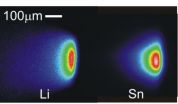Drinking alcohol during a rich meal slows down digestion, but doesn't increase indigestion
Research: Effect on gastric function and symptoms of drinking wine, black tea, or schnapps with a Swiss cheese fondue: Randomized controlled crossover trial
2010-12-15
(Press-News.org) People can be reassured that while alcohol may slow down digestion after a rich calorific meal, enjoyed by many during the Christmas season, it will not cause indigestion symptoms such as heartburn, belching and bloating, finds research in the Christmas issue published on bmj.com today.
In order to determine the effects of alcohol on the digestive system when rich meals are consumed, investigators at the University Hospital of Zurich, led by Dr Mark Fox now at the Queens Medical Centre in Nottingham, studied 20 individuals who either drank wine or black tea with cheese fondue followed by cherry liqueur or water as a digestive after the famous Swiss dish.
Fox and colleagues say that while they concentrated on fondue the results of their research "can be generalised to address the wider issue of alcohol's effects on digestion and digestive comfort after any large, rich meal of the kind we all enjoy over the festive season".
Twenty healthy volunteers (14 male and six female) aged between 23 and 58 took part in the study. None of the participants had a history of alcohol misuse or stomach disease. They had an average body mass index (BMI) of 23.6 and none were taking prescription medicine.
The participants were tested on two days at least one week apart. Half of the group drank white wine with their fondue and the other half drank black tea. This was followed by a cherry liqueur digestive (schnapps) or water 90 minutes later.
The research team used established scientific breath tests to assess the effects of alcohol consumption on the digestive system.
The results show that the process of digestion was much slower in the group that drank alcohol with their fondue. However the results also demonstrate that alcohol did not contribute to an increase in indigestion problems such as heartburn, belching and bloating.
The authors conclude that "healthy readers should be reassured that they can continue to enjoy this traditional meal with the beverage of their choice without undue concern about postprandial digestive discomfort".
INFORMATION: END
ELSE PRESS RELEASES FROM THIS DATE:
2010-12-15
Research in the Christmas issue published on bmj.com today explodes the Danish myth that it is possible to get drunk by submerging your feet in alcohol.
The authors, led by Dr Peter Lommer Kristensen from the Hillerød Hospital in Denmark, say it was important that the myth underwent scientific scrutiny to prevent students wasting their time experimenting with this activity.
Three adult volunteers took part in the study. None of them suffered from any chronic skin or liver disease and they were not addicted to alcohol or psychoactive drugs. The participants were not ...
2010-12-15
The skeletons of kings and queens lying in mass graves in the Royal Basilica of Saint-Denis in Paris could finally have the solemn funeral ceremonies they deserve, say experts in the Christmas issue published on bmj.com today.
Many of the graves in the Royal Basilica were destroyed by revolutionaries in 1793 and very few remains of the mummified bodies have been preserved and identified.
Dr Philippe Charlier led the scientific breakthrough that has identified the head of the French King, Henri IV.
A team of scientists from different fields of expertise including ...
2010-12-15
Washington, D.C. (December 14, 2010) -- One of the rarest metals on Earth may be an excellent option for enabling future flash memory chips to continue to increase in speed and density, according to a group of researchers in Taiwan.
"Incorporating nanocrystals of iridium into the critical floating gate portion of flash memory designs shows both excellent memory properties as well as stability in the high temperatures used in processing such semiconductor devices," says the research team leader, Wen-Shou Tseng of Taiwan's Center for Measurement Standards, Industrial Technology ...
2010-12-15
Washington, D.C. (December 14, 2010) -- The manufacturing of semiconductor wafers used in all types of electronics involves etching small features onto a wafer with lasers, a process that is ultimately limited by the wavelength of the light itself. The semiconductor industry is rapidly approaching this fundamental limit for increasing the speed of the microchip. The development of a new intense 13.5-nm (extreme ultraviolet or EUV) light source will resolve this issue by reducing the feature size by an order of magnitude or so, according to Purdue researchers in the Journal ...
2010-12-15
Washington, D.C. (December 14, 2010) -- Moving a step closer toward quantum computing, a research team in the Netherlands recently fabricated a photodetector based on a single nanowire, in which the active element is a single quantum dot with a volume of a mere 7,000 cubic nanometers. The device is described in the American Institute of Physics' journal Applied Physics Letters.
Photodetectors based on single quantum dots are expected to find uses in optoelectrical interfaces in future quantum computers, where single photons will carry information over long distances and ...
2010-12-15
The performance of a brain-machine interface designed to help paralyzed subjects move objects with their thoughts is improved with the addition of a robotic arm providing sensory feedback, a new study from the University of Chicago finds.
Devices that translate brain activity into the movement of a computer cursor or an external robotic arm have already proven successful in humans. But in these early systems, vision was the only tool a subject could use to help control the motion.
Adding a robot arm that provided kinesthetic information about movement and position ...
2010-12-15
Washington, D.C. (December 14, 2010) -- While the causes of epileptic seizures continue to confound brain researchers, scientists have been exploring how changes in the coordinated activity of brain networks, as monitored through electrodes, might help predict impending seizures. A report in the American Institute of Physics' journal CHAOS offers new insight into this possibility.
Two properties are commonly used to measure fluctuations in the activity of a brain network; one, known as L, relates to the overall connectedness between the activities of brain regions (or ...
2010-12-15
In an exciting example of international collaboration, a Qatar astronomer teamed with scientists at the Harvard-Smithsonian Center for Astrophysics (CfA) and other institutions to discover a new alien world. This "hot Jupiter," now named Qatar-1b, adds to the growing list of alien planets orbiting distant stars. Its discovery demonstrates the power of science to cross political boundaries and increase ties between nations.
"The discovery of Qatar-1b is a great achievement - one that further demonstrates Qatar's commitment to becoming a leader in innovative science and ...
2010-12-15
JAMBI, Indonesia – A Sumatran rainforest named a global priority for tigers and home to a unique orangutan rescue project is targeted for clearcutting by one of the world's largest paper suppliers.
An investigation found that since 2004, companies affiliated with Asia Pulp & Paper/Sinar Mas Group have sought out selective logging concessions with dense natural forests in the Bukit Tigapuluh landscape. The companies obtained government licenses to switch the forest status to industrial timber plantation concessions, sometimes under legally questionable circumstances. ...
2010-12-15
TUCSON, Ariz. (Dec. 14, 2010) -- A unique underground surveillance system tested by UA researchers could be used to watch the entire U.S.-Mexico border continuously.
The border-monitoring system, known as Helios, consists of laser pulses transmitted through fiber-optic cables buried in the ground that respond to movements on the surface above. A detector at one or both ends of the cable analyzes these responses. Helios is sensitive enough to detect a dog and can discriminate between people, horses and trucks. The system can be set to avoid being triggered by small animals, ...
LAST 30 PRESS RELEASES:
[Press-News.org] Drinking alcohol during a rich meal slows down digestion, but doesn't increase indigestion
Research: Effect on gastric function and symptoms of drinking wine, black tea, or schnapps with a Swiss cheese fondue: Randomized controlled crossover trial


